1. “The cloud for everyone is made here. Together.” – Not just a marketing slogan…
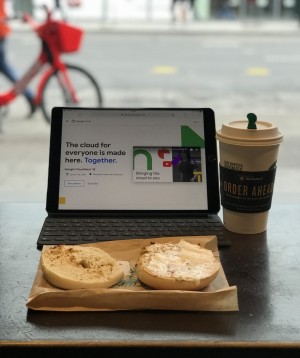
It’s my last day in San Francisco and I’m on my way to the Golden Gate Bridge hoping to get a nice photo without fog before I head out to the airport. I’m having a quick breakfast (bagel with cream cheese of course) at the Starbucks close to the Moscone Centre where it all happened and I’m reflecting on the last few days and I thought to myself: “you know, this Cloud for everyone made here together is really not just marketing mumbo-jumbo as it is so many times at these kinds of events.” It really is: The cloud for everyone, is made here. Together. I say that for a couple of reasons:
100% Partner Focus
Google is 100% committed to partners and has made 3 major announcements towards partners:
- 100% Partner attachment to the deals.
- 100% Involvement in professional services engagement.
- 100% Partner inclusion in marketing efforts.
Being a new partner in The Netherlands I have already personally seen great support from Google and have been really working together with our local Partner Business Manager as well as our Territory Sales Account Manager.
Open Source
Google has always been committed to open-source, but I’ve really seen the energy and excitement coming from contributors to their open source projects.. Ranging from Red-Hat talking about their contribution to Kubernetes to Lyft and IBM (amongst others) working with Google on Istio, you could feel the vibe of the open-source community on the floor.
Big, Small and Personal

Can you imagine being a cloud provider and serving a customer as large as Twitter? How about Unity3d? What abouta small startup only needing a few resources from Compute Engine? Yes Google Cloud Platform serves them all. We heard success stories as well as reasons why CGP has been the best option for them from customers ranging all sizes.
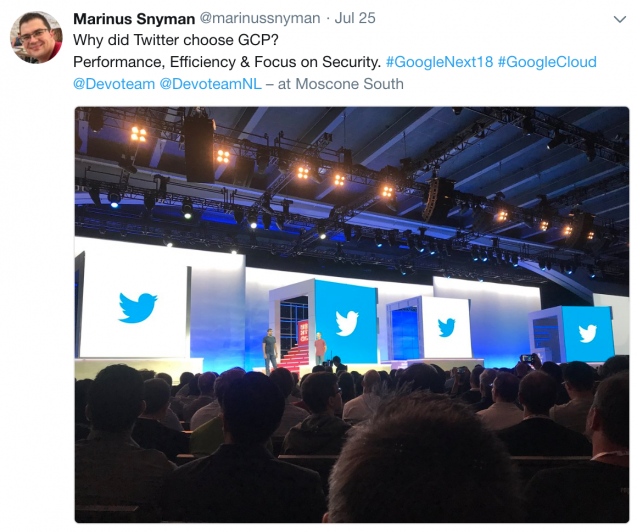
Even for personal use, Google Nearline Storage is the cheapest and fastest way to store large files and the option I personally use and recommend.
Yes, it really is a joint effort and really is for everyone!
2. The democratization of AI is upon us…
Google realized that there are actually very few users can create custom ML models today. There are worldwide:
- 1000’s of Deep Learning Researchers
- ~1 Million Data Scientists
- +21 Million Developers
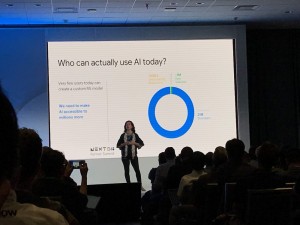 Building ML models are hugely time-consuming and walled off to a few deep learning researchers. Even worse more than 60% of ML models are never put into production. How is Google solving this problem? Cloud AutoML. Cloud AutoML lets you build your own models with a very simple browser-based UI. No specialized knowledge in ML, linear regression (and what not) required. Use your own data, load it, click ‘train’ and that’s it. You can now use your predictions with a simple rest API.
Building ML models are hugely time-consuming and walled off to a few deep learning researchers. Even worse more than 60% of ML models are never put into production. How is Google solving this problem? Cloud AutoML. Cloud AutoML lets you build your own models with a very simple browser-based UI. No specialized knowledge in ML, linear regression (and what not) required. Use your own data, load it, click ‘train’ and that’s it. You can now use your predictions with a simple rest API.
Example case: Partner had no previous ML knowledge, and with a team of 3 theycould get to 93% accuracy with their model using Cloud AutoML in only a few weeks
Google also announced BigQueryML. BigQuery ML enables users to create and execute machine learning models in BigQuery using standard and familiar SQL queries! It enables SQL developers to build ML models using existing SQL tools and skills. BigQuery ML also increases development speed by eliminating the need to move data.
In addition to all of above, Google is also infusing AI into GSuite with features like Auto Reply in Hangouts Chat, Smart Compose in Gmail and ML powered grammar checking in Docs.
I strongly believe that soon we will come to expect AI as part of all development platforms as well as the software we use. And Google is leading the pack.
3. We can finally connect, manage, and secure Microservices in an easy way!
Contrary to what you might think, breaking down the Monolith into Microservices increases complexity. We have experienced this at Devoteam and Lyft had this challenge years ago when they started the Open Source project Istio. In the meantime, both IBM and Google have become major contributors to the open-source project and it has now finally reached Version 1.0 and is ready for production use. Istio is a service mesh that gives operators the controls they need to manage Microservices at scale. This includes connecting, securing, controlling and observing services. With the launch of Google Kubernetes Engine On-Prem, this becomes even more exciting!
Why should you care about Istio? Istio makes it easy to create a network of deployed services with load balancing, service-to-service authentication, monitoring, and more, without any changes in service code.
4. The edge is crucial (in IoT)!
What happens when your internet connected wind turbine loses connectivity? How about when an oil rig generates so much data at such a fast pace that sending it all to the cloud becomes impractical? What happens to any IoT device connected to an unreliable network?
As great as the cloud is, one simply cannot rely on it being available 100% of the time. Google realized this and have launched two new products, one hardware and one software to handle some of the computing ‘at the edge (meaning on the IoT device itself).’
Edge TPU (Hardware)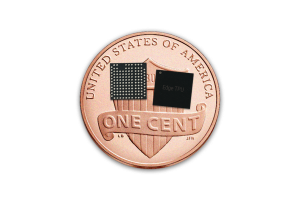
Edge TPU is purpose-built designed to run AI at the edge. It delivers high performance in a small physical and power footprint, enabling the deployment of high-accuracy AI ‘at the edge.’
Cloud IoT Edge (Software)
Cloud IoT Edge extends Google Cloud’s powerful data processing to edge devices, such as robotic arms, wind turbines, and oil rigs etc, so they can act on the data from their sensors in real time and predict outcomes locally. Cloud IoT Edge can run on Android Things or Linux-based operating systems.
5. (Bonus takeaway) Meetings should be maximum 45 minutes!
With day’s starting at 9:00 (and a lot sooner if you want a good seat at the day’s keynote) and ending at ~18:00 you would think by the end of the day everyone will have no concentration or energy left to focus on the sessions. This was not the case.. The secret? Sessions were limited to 45 minutes: giving you always a minimum of 15 minutes to grab a snack (and were there snacks!), a coffee or go for a bathroom break with enough time to reach your next session even if it’s a few blocks away. This made me think of some day’s back at the office with back-to-back one-hour meetings with not even enough time to walk between the meetings rooms. I need to change this and so should you! 🙂

Image: Setting your default duration for meetings is easy in your GSuite Calendar settings.
6. The time is now!
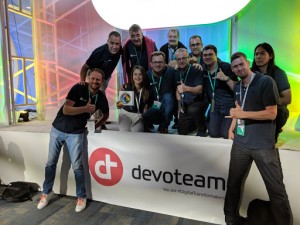 The Google Cloud Partner day (the first day of the event only for partners) had just as many attendees this year as
The Google Cloud Partner day (the first day of the event only for partners) had just as many attendees this year as
the whole Cloud conference had 2 years ago! And with 24k attendees this year at the conference it shows the tremendous momentum to the cloud and specifically the Google Cloud Platform. Even large enterprise customers that were holding out are now also moving to the Cloud as the advantages can’t be ignored anymore.
When Sundar Pichai (Google CEO) took the stage he said: “We’re at an inflection point as an industry with AI” echoing the ‘AI-first’ mantra he’s repeated often since taking the reins at Google. Diane Greene (GCP CEO) explained the Google Cloud Platform as: “Security is the number one worry, AI the number one opportunity.”

When you look at above, combined with the fact that Devoteam won the Google EMEA Services Partner of the Yearaward, I couldn’t help but feel the pounding drumbeat in the air!
The time is now!
And if you were wondering (and still reading) I did manage to snap that picture of the bridge.. 😉
Key facts & figures
 |
 |
 |
 |
| Partner since 2011 | 4 countries in EMEA | +1000 references | 100 experts |